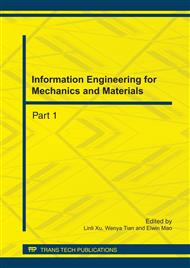p.64
p.70
p.76
p.81
p.86
p.91
p.96
p.100
p.104
A Selective and Sensitive Method for the Determination of Molybdenum in High Grade Pipeline Steels
Abstract:
Pipeline system is the main form of transportation for oil and natural gas. High grade pipeline steel can effectively improve the security of long-distance transportation and to reduce costs, will become the main steel for gas pipeline project. A highly selective and sensitive spectrophotometric method for the determination of molybdenum in high grade pipeline steel has been presented. This method was based on the chromogenic reaction between molybdenum(V) and sodium thiocyanate. Employing stannous chloride as a reductant, molybdenum(VI) was reduced to molybdenum(V) at the room temperature. The obtained molybdenum(V) formed an orange-red-colored (1:5) ligand complex with thiocyanate. The absorbance of the complex was measured at 470nm, and the molar extinction coefficient (e) is 1.75´104L·mol-1·cm-1. Under the optimum reaction conditions the absorption value was proportional to the concentration of molybdenum in the range of 0.11%~0.89% (mass fraction), and the relative standard deviation was less than 3.0%. The proposed method was free from the interference from a large number of analytical important elements and has been applied satisfactorily to the determination of molybdenum in X80 pipeline steel and X70 pipeline steel samples with the improved accuracy and precision.
Info:
Periodical:
Pages:
86-90
Citation:
Online since:
July 2011
Authors:
Price:
Сopyright:
© 2011 Trans Tech Publications Ltd. All Rights Reserved
Share:
Citation:


